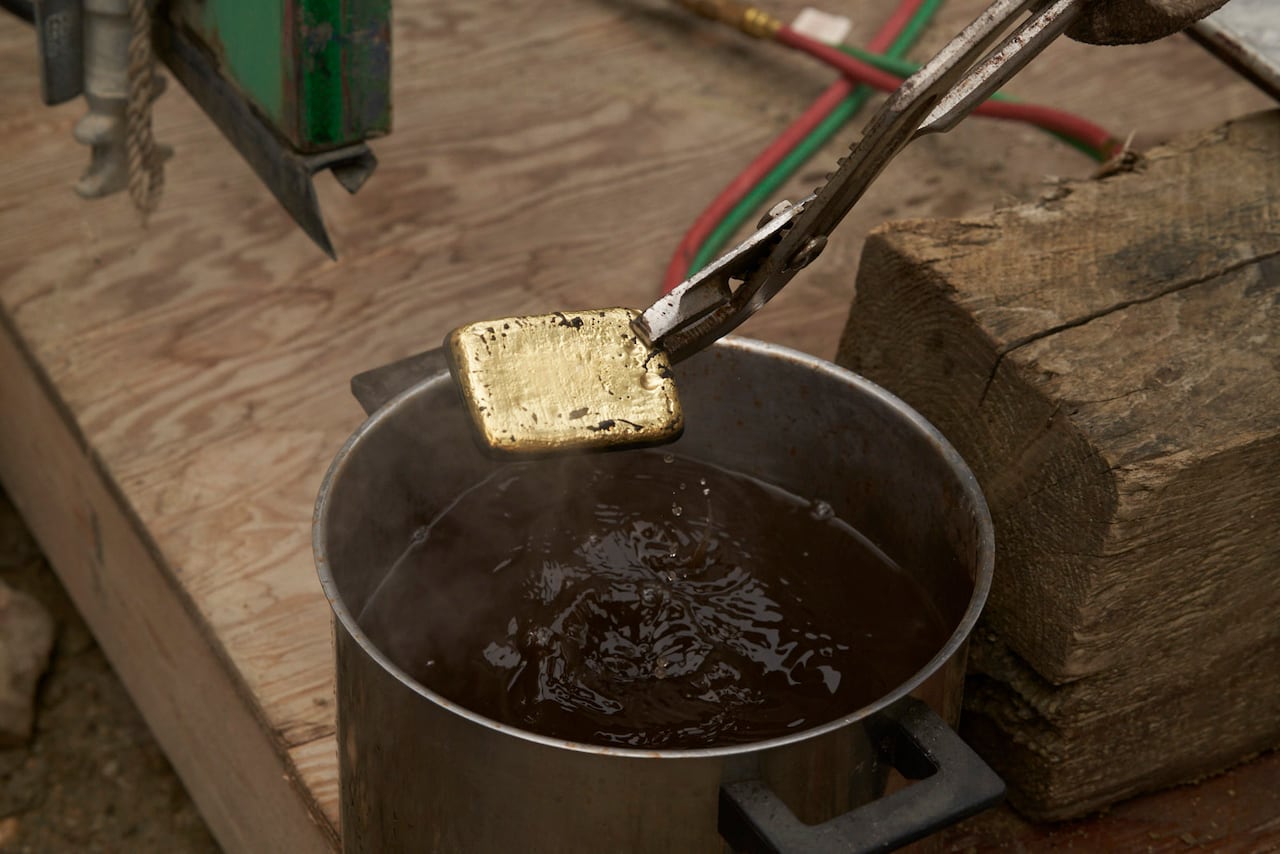Regeneration, a public benefit company headquartered in Washington, aims to clean up land and waterways in the Yukon, British Columbia and Alaska—and make money doing it.
The project uses advanced technology to extract metals from waste in old mines.
The company has established partnerships with Apple, Tiffany and Co. and Canadian jewelry company Mejuri, which agreed to buy metals recovered from obsolete mines and help fund restoration efforts.
The project began more than a decade ago, focusing on sites in the North where decades of placer mining had left piles of sediment and waste rock in and along streams and rivers.
CEO Stephen D'Esposito says jewelry and technology companies are aware of environmental issues in the mining industry and are interested in being part of the solution.
“I approached Tiffany and Apple and said, if I could find opportunities in Alaska, in the Yukon, in British Columbia, to do a project where you go back to legacy sites—sometimes 100 years old—and see if there is still an opportunity to mine gold and restore the place, would you be interested in buying the gold and helping restore the flow of funds?” D'Esposito said. “And the answer was yes.”
The goal was to extract the remaining gold from this waste, as well as transform the streams and replant vegetation, making the waters suitable again for species such as salmon and grayling.
“We saw some really amazing results,” said Carly Winn, a biologist and chief restoration specialist at Regeneration. “Sometimes anadromous fish would come to us after a few days.”
Growing interest in ethical, traceable jewelry
Companies like Mejuri see the project as a way to achieve their climate and sustainability goals.
“This is a real opportunity for us to be part of the recovery,” said Holly McHugh, Mejuri’s vice president of sustainability and social impact.
McHugh said customers are increasingly interested in making sure the jewelry they buy is ethically made.
The project required collaboration with refineries willing to process small quantities of gold and process the material separately from other gold to provide a “fully traceable product.”
“Being able to trace all the way to the Yukon and Alaska and, you know, beautiful places was an exciting challenge that the company was excited to take on,” McHugh said.
Mejuri's first Salmon Gold jewelry was released last year, and the newest line will go on sale October 13th.
The project first started as a non-profit venture of the NGO Resolve. In 2021, they launched a startup called Regeneration with even more ambitious goals.
The project continues to expand
Abandoned, polluting mines exist across Canada, and the restoration process is often incredibly expensive and funded by taxpayer dollars.
“The mining industry is not really prepared to address the waste problem,” D'Esposito said. “It’s designed to open new mines and finance new mines.”
Many old mines contain significant amounts of waste containing metals and other contaminants that can contaminate groundwater and harm nearby communities.
Reclamation is based on the idea that this waste provides a financial opportunity and that cleanup can actually be profitable. But D'Esposito says the company still has a lot to prove.

“There is a model for how you go about new exploration projects, isn't there? There is an accepted market mechanism for demonstrating that you have gold, copper or cobalt,” he said. “But there is no financial model that the market will accept that proves what's in your tails. Interestingly, waste mining is not an industry concern.”
The company is returning to old mines using new technology and equipment, and re-mining toxic waste to purify and recover valuable metals.
“A lot of the tailings and waste rock may contain important minerals that we didn’t even pay attention to in the 50s,” said Olenka Forde, a hydrogeologist working on the project. “And the ability to extract these important minerals did not exist.”
Ford said modern restoration efforts often focus on water quality, with landscaping and environmental features taking a backseat.
“The opportunity is to move that waste instead of using a Band-Aid that you could use to purify the water and cover the waste. You can actually recycle it,” she said.
Reclamation works in Hadley, British Columbia to help clean up tailings. The company is also located in active discussions with First Nations and the federal government on a number of projects in the Yukon.
Sebastian Jones of the Yukon Conservation Society said that while questions remain about whether restored sites will remain as they are (placer mining is especially prone to new miners returning to the same sites over and over again), it's good to hear about a new approach to a century-old problem.
“This is the type of out-of-the-box thinking that creates positive change,” he said.







